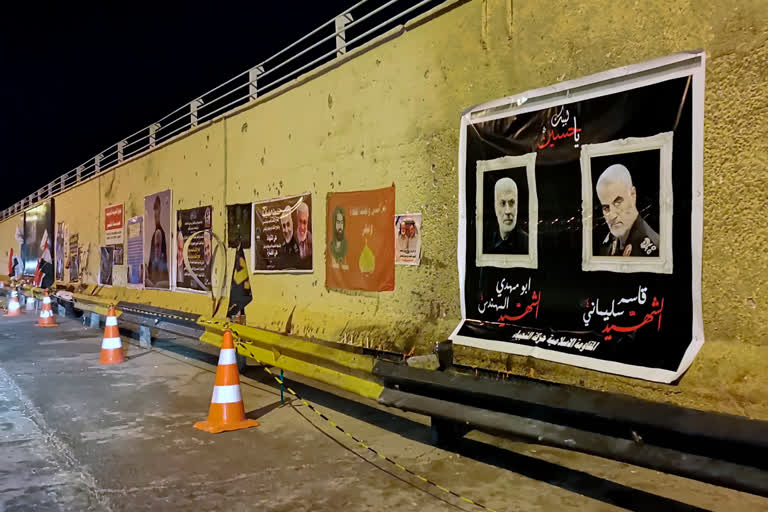Beirut: The Islamic State group's self-styled “caliphate” across parts of Iraq and Syria seemed largely defeated last year, with the loss of its territory, the killing of its founder in a US raid and an unprecedented crackdown on its social media propaganda machine.
But tensions between the United States and Iran and the resulting clash over the US military presence in the region provide a comeback opportunity for the extremist group, whose remnants have been gradually building up a guerrilla campaign over the past year, experts say.
American troops in Iraq had to pause their operations against IS for nearly two weeks amid the tensions. On the other side, Iranian-backed Iraqi militiamen who once focused on fighting the militants have turned their attention to evicting US troops from the Middle East.
In the meantime, Islamic State group sleeper cells intensified ambushes in Iraq and Syria in the past few weeks, killing and wounding dozens of their opponents in both countries. Activists and residents say the attacks have intensified since the US killed top Iranian general Qassem Soleimani on Jan. 3 drone strike at Baghdad's airport.
It is not clear whether the uptick is related to the repercussions that followed from the strike, and some of the attacks may have been planned before Soleimani's killing. The US officials deny seeing any particular increase in IS activities. “They haven’t taken advantage of it, as far as we can see,” said James Jeffrey, the State Department envoy to the international coalition fighting the Islamic State.
Read more:Plane skids off runway onto nearby street in Iran
Mervan Qamishlo, a spokesman for Syria's US-backed Kurdish-led force, said the intensification of IS attacks began even earlier, since October when Turkey began a military operation against Kurdish fighters in northern Syria.
Still, the militants gained at least temporary breathing room as the killing of Soleimani, along with a senior Iraqi militia leader, brought Iran and the US to the brink of all-out war and outraged Iraqis, who considered the strike a flagrant breach of sovereignty.
On Jan. 5, Iraq's parliament called for the expulsion of the 5,200 US troops from the country who have been there since 2014 on a mission to train Iraqi forces and assist in the fight against IS. The US-led coalition then put the fight against IS on hold to focus on protecting its troops and bases. It said last week that it had resumed those operations after a 10-day halt.
"This tension will for sure help Daesh, as all forces fighting it becomes busy with other matters," warned Abdullah Suleiman Ali, a Syrian researcher who focuses on jihadi groups, using the Arabic acronym for IS.
Among other things, he said Iran-US tensions help give IS the opportunity to restructure as its new leader, Abu Ibrahim al-Hashimi al-Qurayshi, strengthens his grip. Al-Qurayshi was announced in the post after longtime leader Abu Bakr al-Baghdadi was killed by a US raid in Syria in October.
"The day the American-Iranian clash began, Daesh started intensifying its attacks," said Rami Abdurrahman, who heads the Britain-based Syrian Observatory for Human Rights, an opposition war monitor.
On Jan. 14, IS launched a cross border attack from Syria into Iraq, killing an Iraqi officer. A day later, IS fighters attacked an Iraqi force in the central Salaheddine region, killing two soldiers and wounding five. Two days later, an Iraqi intelligence major was killed in a car bomb north of Baghdad.
Also read:Clash erupted between police and protesters in Iran
One of the deadliest attacks occurred in Syria on Jan. 14, when IS fighters stole some 2,000 cattle from a village near the eastern town of Mayadeen. One of the four shepherds that own the cattle informed authorities and a Syrian government military force was sent to the area, where they were met by IS fire.
